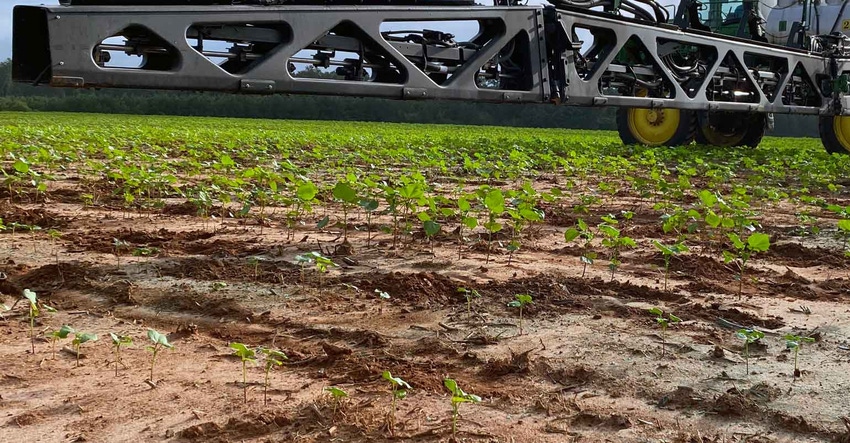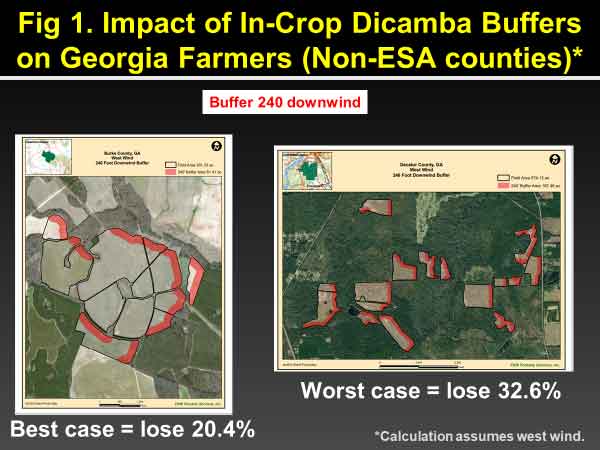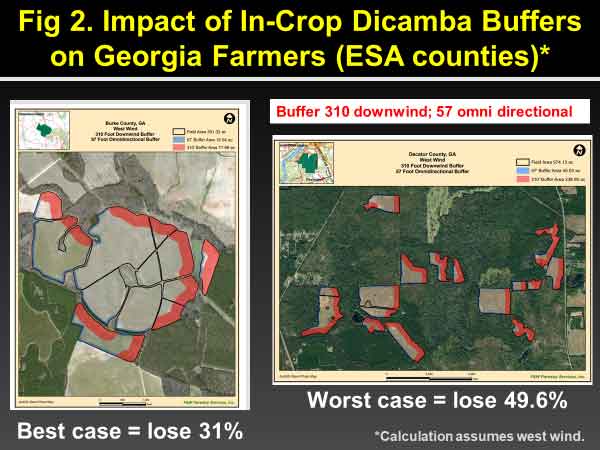May 9, 2022

The ability to control weeds on our family farms in the future is frightening, at least for those paying attention. If you are one of those reading popular press articles or listening to scientists, then you know weed resistance to herbicides is extremely alarming, removing tools from the toolbox rapidly.
Palmer amaranth with resistance to glyphosate, ALS-herbicides (Staple,etc.), atrazine, and the PPO herbicides (Reflex, Valor) has been documented in our state; keep in mind resistance issues in ryegrass are an even greater problem for some! Although the loss of tools to resistance is justifiability alarming and a very serious situation, unfortunately, I am not sure this alone is our greatest challenge. In fact, I would suggest it is not!
The current regulatory atmosphere is equally if not more of a concern and unlike resistance, we have little influence on the decisions being made. In-field buffers placed on dicamba products labeled for use in cotton prohibit their legal application on 20% to 50% of our fields, and don’t forget the court system will likely determine our ability to use these tools in any practical manner over the next 12 months.

Credit: UGA Extension
Enlist Duo is no longer registered in 11 Georgia counties because of the Endangered Species Act (ESA); MSMA is facing serious use limitations due to rotational restrictions; and just last week, the U.S. EPA released details informing us diuron may be removed from our weed management programs (cotton, veggies, and fruit). Diuron is, as you already know, one of the most important herbicides available on a cotton farm today providing excellent weed control, resistance management, and economic sustainability. Make yourself more aware of this situation and be prepared to act.

Credit: UGA Extension
Unfortunately, that is not all, glyphosate and atrazine face serious threats especially from the Endangered Species Act, as does most every other pesticide. Research evaluating alternatives to herbicides is critically important and heavily investigated by weed scientists. Cover crops, tillage, flaming, mowing, mulching, solarization, see and spray technologies, weed electrocution, weed-seed harvesters, and even using radiated pollen to manage weeds all have potential. However, each of these approaches is likely only consistently effective (on large scale) when used in conjunction with herbicides, especially for Georgia farmers as our weed population densities and continual emergence makes our weedy competitors fierce adversaries.
So, what about protecting and hopefully one day expanding our toolbox? Mitigating resistance is the first step, and each farm is in control of this step by making the decision to implement sound diversified management programs in a timely manner. The greater challenge is regulatory.
Agriculture must unite to address the loss in the practical use of herbicides (and other pesticides) through cooperative efforts, developing methods to assist regulators by generating sound science to help them make better decisions at a local level. Our farmers and ranchers must also lead the mission of using pesticides wisely and only in ways that are safe for applicators, the environment, wildlife, neighbors, and our consumers!
Source: University of Georgia Extension, which is solely responsible for the information provided and is wholly owned by the source. Informa Business Media and all its subsidiaries are not responsible for any of the content contained in this information asset.
You May Also Like




